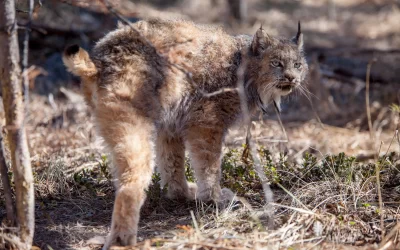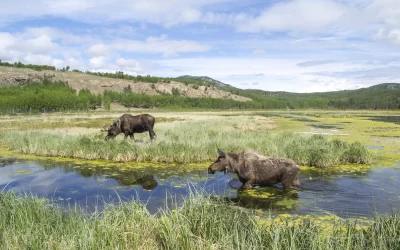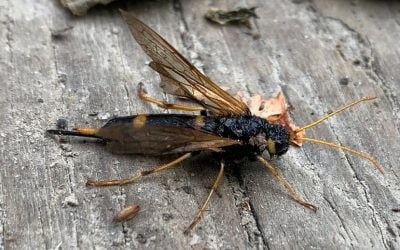5 minute read -Beginning this spring and continuing over the next three years, Yukon Seed and Restoration in partnership with Yukon Government's Wildland Fire Management Branch will collect 6,000 g of native Trembling aspen (Populus tremuloides) seed to use in...
Research Articles
A Lynx With a Legacy
6 minute readThe Yukon Wildlife Preserve is deeply saddened to announce the passing of its beloved male lynx on Saturday, November 9th. This exceptional animal, who joined the Preserve’s collection in 2010, was a symbol of resilience and scientific importance, leaving...
Breaking Down that Stink
2 minute read - Nestled in the heart of the Takhini River Valley on the traditional territory of the of the Kwanlin Dün First Nation and the Ta'an Kwäch’än Council, is a haven for nature enthusiasts seeking a unique, immersive experience with Yukon’s native flora and...
Your Yukon NightHawks
This article was originally published in The Preserve Post newsletter in Spring 2016. More current information and contact for the regional project can be doing on WildResearch.2 minute read - Is it true, that the early bird gets the worm? Not always!COIN male. ...
Moose Hair Loss Study
This article was originally published in The Preserve Post newsletter in Spring 2019. In April 2022 Emily et al., published a paper Improving Widescale Monitoring of Ectoparasite Presence in Northern Canadian Wildlife with the Aid of Citizen Science on this project....
Surviving a Cold Snap
15 minute read - This is Part 3 of a 4 part series by guest author and ecologist, Joshua Robertson on how wildlife at the Yukon Wildlife Preserve stays warm (thermoregulates) in the winter. Read Part 1: Staying Warm in the Yukon and Part 2: Winter Heat Losses. Preface...
The Dangerous and the Benign: distinguishing between big scary bugs
Some participants of the 2020 Bioblitz got a bit of a scare when they discovered a large insect with what appeared to be a massive stinger. Since Asian giant hornets aka “murder hornets” had recently made headlines with their unwelcome appearance on the west coast of North America, it was reasonable to worry that they may have traveled north to our territory. But we are here to squash that fear! The big scary bug you may be spotting in your backyard is neither murderous nor a hornet. It also doesn’t actually have a stinger! Learn about the harmless wood-loving horntail and how it couldn’t be more different than the dangerous hornet it was mistaken for.
Bear Poo and You: learning about Yukon Bears with the OURS research project
People say there’s more than one way to skin a cat but there’s also more than one way to survey a bear. One of those ways is through their scat! Operation Ursus Research using Scat is doing exactly this and you can be a part of it. Learn how these surveys are conducted, why they’re important, and how you can help improve our knowledge of Yukon bears by collecting their poo.
Rusty Blackbird: the mysterious decline of a common boreal bird
The aptly named Rusty Blackbird is regular fixture in the boreal forest and can often be spotted in wetlands and hanging out by slow moving streams. Until recently, very little was known about this opportunistic water-loving bird but as we learn more about them, we’ve also learned that their populations are in decline. What’s causing this drop in Rusty Blackbird numbers? We’re not entirely sure. Read on to learn how scientists are using modern
technology and recent discoveries to help unravel this mystery. Written by Pam Sinclair in conjunction with Joelle Ingram









